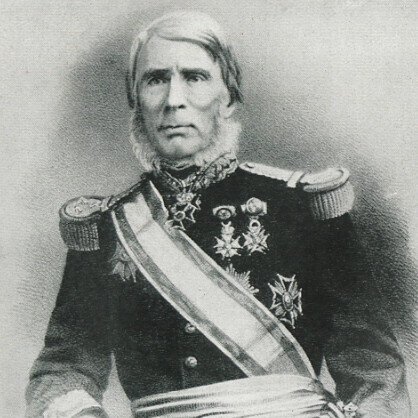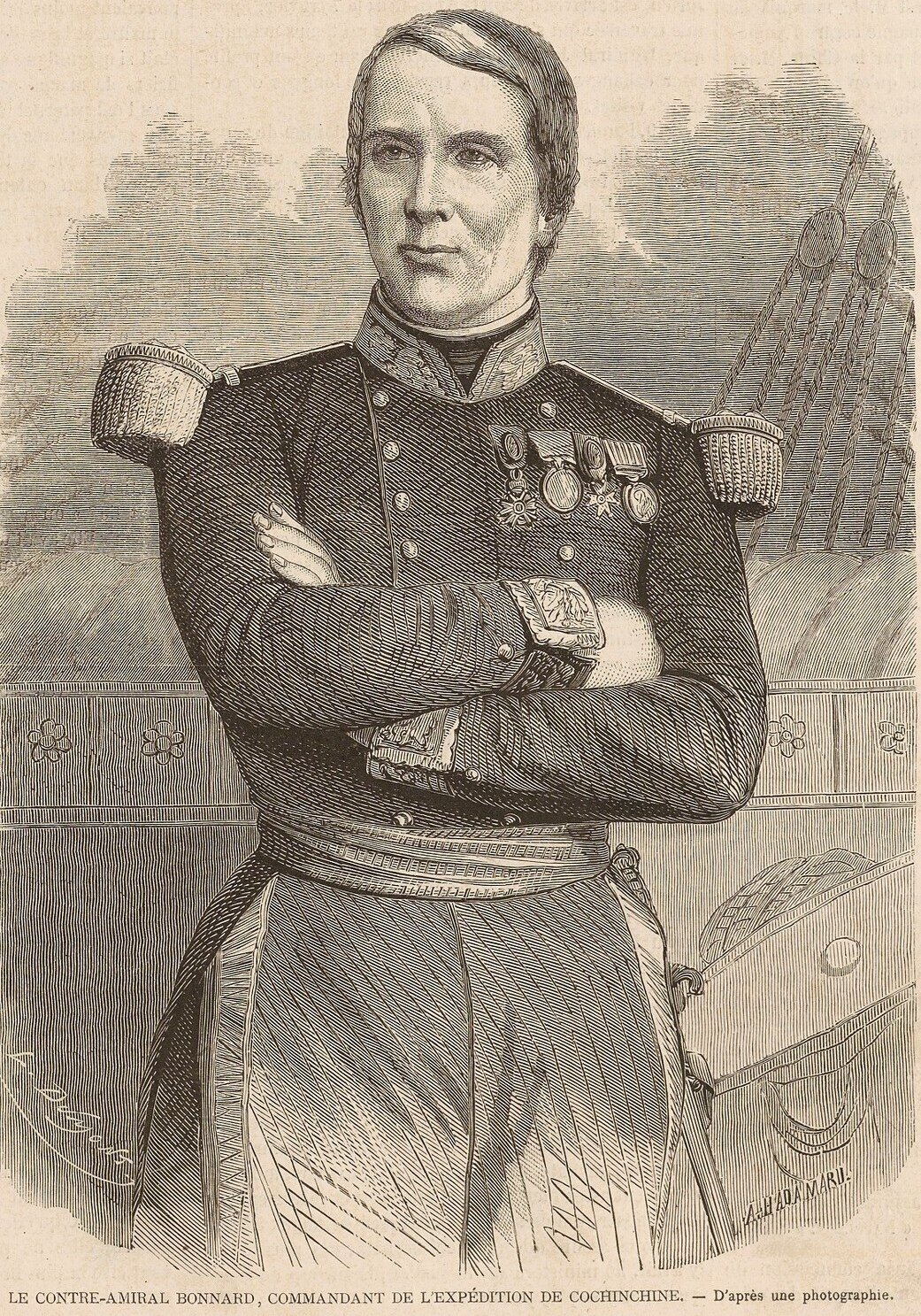Louis Bonard

Louis Adolphe Bonard [or Bonnard] (27 March 1805, Cherbourg, France — 31 March 1867, Vanves, France) was a French naval officer who was governor of Cochinchina from 1861 to 1863 and, while campaigning against the insurrections, visited Angkor in September 1962.
A graduate of École Polytechnique in 1825, he served in Mediterranean Sea and was aboard the Silène when the warship was wrecked on the Algerian coast in the night of 14 – 15 May 1929, during the French invasion of Algiers. Shackled and imprisoned by the defenders of Algiers, he was freed from his captors and pursued his career aboard the Sphynx, the Palinure, the Grenadier and the Docouédic in South and East Mediterranean, coming back to North Africa in 1834 as harbour master in Mers El Kébir, Oran, and as the captain of the Iris in 1838, and of the Volage in 1840 – 2.
Made an Officer of the Legion of Honour in 1844 (Commander in 1856, Grand Officer in 1864), Bonard then was second in command of the Uranie in the Pacific, claiming Bora Bora against the British Navy in 1845. He was active during the Franco-Tahitian War (1844 – 1847), fighting the anti-colonial forces of Queen Teriitaria II. According to the blog Tahiti Info, he helped in the development of the new species of Tahitian vanilla, Vanilla xtahitensis, by bringing in cuttings from the Philippines, along with Admiral Ferdinand Alphonse Hamelin (1796−1864), who was to become French Minister of the Navy.
After commanding the naval subdivision of Oceania and returning to France in 1852, Bonard served as Governor of French Guiana from December 1853 to December 1855, when a bout of yellow fever forced him to sail back to France again, where he was promoted to the rank of contre-amiral (counter admiral) and appointed major general of the navy at Brest. He was commander of the naval stations of the western coasts of America and Oceania from 1857 to 1860.
Commander-in-chief ot the French forces in Cochinchina since 29 Nov. 1861, he was officially the first Governor of Cochinchina, capturing the provinces of Biên Hòa and Vĩnh Long, and securing the 5 June 1862 Treaty of Saigon in which Vietnamese emperor Tự Đức recognized the French rule over the provinces of Gia Định, Định Tường and Bien Hoa, as well as Poulo Condore (Côn Đảo) Island — the treaty was also signed by Colonel Palanca, representative of the Queen of Spain.
In September 1862, he visited the ruins of ‘An-cor’ [Angkor]. The year after, on 1 May 1863, he was succeded by Admiral Pierre-Paul de La Grandiere, who sent Navy officer Doudart de Lagree to the Angkor site. The note he sent to the Ministry of the French Navy and Colonies in November 1864, “Memoire sur l’urgence de l’exploration du fleuve le Me-kong, pour créer dans la Cochinchine française, à Saïgon, un entrepôt du commerce avec le Thibet et les provinces occidentales de la Chine” (Ministère de la Marine, dir. des Colonies, carton ‘Cambodge’, dossier n° 1), was a major enabling factor for the 1866 – 8 Mekong Exploration Commission.
Promoted to vice admiral on 25 June 1862, Bonard took charge of the urban development of Saigon (now Ho Chi Minh Ville), promoted the teaching of Vietnamese and French languages, he tried to find a balance of power between French colonial forces and Annamese mandarins, without much success.
Bonard (Bonnard) pictured on the cover of the French periodical L’Illustration-Journal Universel, 1st March 1862, a few months before his visit to Angkor. [source: gallica.bnf.fr]

